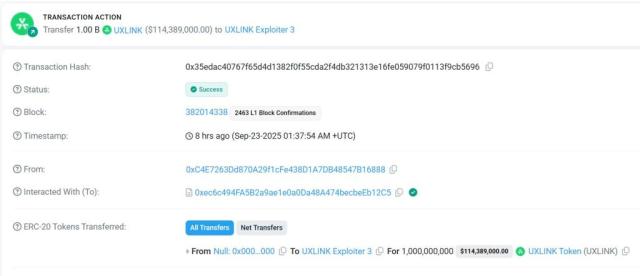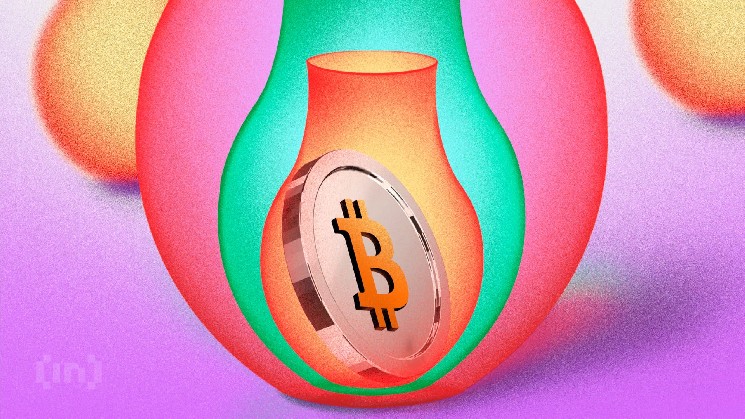Written by: Plain Language Blockchain
On September 17, 2025, the U.S. Securities and Exchange Commission (SEC) made a seemingly unremarkable but actually historic decision: it approved the "Universal Listing Standards" for exchange-traded products (ETPs) for spot commodities (including digital assets).
To outsiders, this was just a mouthful of news. But for believers, developers, and investors who have been in the crypto world for years, it was a thunderclap. The official statement from SEC Chairman Paul S. Atkins sounded restrained and professional: "This move is intended to maximize investor choice and foster innovation by streamlining the listing process."
But the market’s interpretation is more straightforward and enthusiastic: the era of “ETPalooza” (ETP feast) of cryptocurrency has arrived.
So what exactly does this surge mean? What financial magic lies behind the mysterious code "ETP"? More importantly, once regulators give the green light, how will this capital bonanza completely reshape the crypto landscape?
01 Your "Crypto ETF" is not a real ETF
To understand this revolution, we must first understand Wall Street's alphabet soup. The term "crypto ETF" is a catch-all term, encompassing a variety of product structures and risks.
ETP (Exchange Traded Product): This is a general term for all such products, which can be bought and sold at any time on an exchange, just like stocks.
ETFs (Exchange-Traded Funds): The poster child of the family. They're true funds that directly hold the basket of assets (e.g., stocks, bonds) they track. In the United States, the vast majority of ETFs are strictly regulated under the Investment Company Act of 1940, which requires asset diversification and provides the highest level of investor protection.
ETC (Exchange-Traded Commodity): This is a custom-designed disguise for cryptocurrencies. Because Bitcoin or Ethereum are single assets and fail to meet the "diversification" requirement of the 1940 Act, a "Spot Bitcoin ETP" cannot legally register as a standard ETF. Its true structure is more like an ETC—a debt security backed by a single commodity (such as gold or Bitcoin) held in physical form.
The key difference: When you buy a so-called "spot Bitcoin ETF," you're not buying a diversified fund fully protected by the 1940 Act. You're buying a trust product that tracks a single asset and is structured more like ETC. While it's also traded on a regulated exchange, its inherent regulatory protections and risk profile are fundamentally different from those of a traditional stock ETF.
02 A revolutionary shift in SEC approvals
The SEC's new regulations are equivalent to upgrading the issuance of crypto ETPs from a muddy and long manual review path to a highway with clear rules.
Old World: The Long Wait
In the past, any spot crypto ETP seeking to go public had to submit a separate application to the SEC, a process that could take up to 240 days and was fraught with uncertainty. Issuers were required to demonstrate their ability to prevent fraud and market manipulation, a high bar to meet.
A new era: the "highway" begins
The new “Universal Listing Standards” have completely changed all of this. Now, as long as a crypto asset meets the pre-set criteria, the related ETP product can be directly listed, shortening the entire process to 60-75 days.
The most crucial criterion for the crypto industry is that futures contracts for an asset have been traded on a market regulated by the U.S. Commodity Futures Trading Commission (CFTC) for at least six months. The SEC's move is a clever one, leveraging the work of its sister regulator, the CFTC, to assess the health of the underlying spot market through the lens of a mature futures market.
"Green List" Released and Key Roles Clarified
This new regulation immediately created a "green list." All crypto assets traded on the CFTC-regulated Coinbase Derivatives exchange for at least six months automatically received a "highway pass" for their spot ETPs. This list includes Bitcoin (BTC), Ethereum (ETH), Solana (SOL), Litecoin (LTC), Dogecoin (DOGE), Cardano (ADA), Avalanche (AVAX), Chainlink (LINK), Stellar (XLM), and Ripple (XRP).
It must be noted here that the SEC's approval order is directed at traditional stock exchanges such as Nasdaq, Cboe and NYSE Arca - these are the "stores" where end investors buy and sell ETP shares.
So what is Coinbase's role? It serves as an upstream "qualification center." A crypto asset futures contract with a six-month track record of trading on Coinbase Derivatives, a CFTC-regulated market, qualifies for "fast track" status.
In short: Coinbase's regulated futures market is the "touchstone," while exchanges like Nasdaq are the ultimate "trading market."
03 "ETP Feast" begins
The SEC's decision has opened Pandora's box, and its chain reaction will create huge waves in every corner of the market.
1. Capital Reshaping: A "Channel" for Hundreds of Billions of Yuan in Funds
The first batch of Bitcoin spot ETPs attracted over $36 billion in net capital inflows within just one year of their launch. This demonstrates the immense pent-up demand for investment in the market. Many traditional investors are eager to enter the crypto market but are deterred by technical barriers such as managing private keys and using wallets.
Now, ETPs offer a perfect bridge for them. They can buy Solana or Chainlink with a single click, just like buying or selling Apple stock, from their familiar brokerage accounts. Analysts predict that over 100 crypto ETPs could launch in the next 12 months, signaling the beginning of a massive bull market driven by mainstream capital.
2. Structural Reshaping: The Crypto Market Has "Wall Street Time"
The emergence of ETP is fundamentally changing the "heartbeat rhythm" of the crypto market.
The "4 PM Effect": Because ETP issuers need to calculate the fund's net asset value around 4 PM New York time, they must buy and sell large quantities of real crypto assets in the market around this time. This results in a predictable, large spike in trading volume on exchanges like Coinbase around this time each day. The crypto market's original 24/7 trading characteristics are gradually being "tamed," becoming synchronized with the working hours of Wall Street.
The return of the "in-kind redemption" mechanism: The SEC recently approved the "in-kind redemption" mechanism. This means that large market makers can directly exchange a basket of actual Bitcoin for ETP shares, rather than using cash. This is the standard operating model for most established ETFs, significantly reducing costs and improving efficiency.
3. Reshaping Power: Coinbase's Turnaround and the Exchange "New War"
The rise of ETPs is rewriting the rules of survival for crypto exchage. For US-based compliance giants like Coinbase, this presents both a danger and an opportunity.
The danger is that when investors can easily purchase crypto products through traditional brokerages, part of Coinbase's retail transaction fee income will undoubtedly be diverted.
The opportunity is even greater. Coinbase is rapidly transforming into an arms dealer for the entire ETP ecosystem. It provides critical custody, market data, and monitoring services to nearly all major ETP issuers, opening up a lucrative and stable new world of B2B institutional business.
In contrast, exchanges with shallower roots in the U.S. regulatory system will undoubtedly be on the defensive when competing for this emerging institutional business. A new war over institutional services has begun.
04 Summary
The "highway" paved by the SEC for crypto ETP is undoubtedly a watershed in the history of the development of crypto assets.
However, this is just the beginning, far from the end. As the crypto market becomes more deeply integrated with traditional finance, it will be increasingly influenced by macroeconomic data, Federal Reserve policies, and global risk sentiment. For those of us in this industry, the only certainty is: the rules of the game have changed. Understanding the rules, embracing change, and maintaining a constant awareness of risk are the ultimate principles for survival and growth in this exciting industry.







